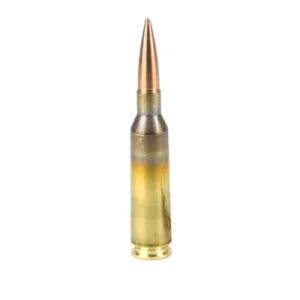
The 50 Browning Machine Gun, sometimes known as the 50 BMG, is a 50 in (12.7 mm) caliber cartridge that was created for the M2 Browning heavy machine gun in the late 1910s and entered formal service in 1921. The machine gun was initially produced during World War I, and despite being cumbersome, the tank began to find its place on the battlefield—it was also resistant to most rifle and artillery shots.
The 50 BMG cartridge has a 290-gram capacity (19 g). The round is a scaled-up version of the 30-06 Springfield, but it has a case wall with a long taper to make feeding and extraction easier in different guns. This cartridge's rifling twist rate is 1 in 15 in (380 mm), with eight lands and grooves.
The 50 Browning Machine Gun is employed in anti-materiel rifles in addition to the M2 Browning heavy machine gun. There is a wide range of ammunition available, and match grade ammunition has boosted the use of 50 caliber rifles by allowing for more precise firing than lesser quality rounds. During WWII, the 50 BMG was principally utilized for anti-aircraft duties in the M2 Browning machine gun, both in its "light barrel" aircraft mount form and the "heavy barrel" (HB) version on ground vehicles.
Depending on the powder and bullet type, as well as the weapon from which it is shot, the 50 BMG round may create between 10,000 and 15,000 foot-pounds force (14,000 and 20,000 J). The 50 BMG's trajectory suffers less "drift" from cross-winds than smaller and lighter calibers due to the high ballistic coefficient of the bullet, making it an excellent option for high-powered sniper rifles.





